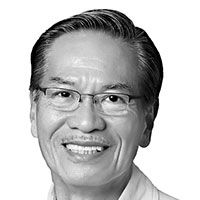Indemnify

The first doses the country is receiving from the Covax facility is due to arrive this week. A small rollout of our vaccination program has been rehearsed and ready to execute.
However, the DILG reports that per their survey, only 3 in 10 residents of the NCR are ready and willing to accept inoculation. Vaccine hesitancy may be the largest hurdle confronting our effort to achieve herd immunity in some form.
There are many reasons for the high degree of vaccine hesitancy. One major reason is anxiety about the economic costs of dealing with possible side effects.
Recall that when we began testing in scale, some infected persons sought to avoid testing because if they were found positive, they could lose work days. A few even escaped from isolation facilities and needed to be tracked down by law enforcement agencies.
The national government, local governments and private enterprises have agreed to procure the vaccines and make them available for free. If we charged real costs for buying and deploying the vaccines, too many will seek to avoid inoculation.
On top of providing the vaccines for free, it now appears some coverage for contingent costs needs to assured. Everything must be done to ensure a soft landing for the vaccination program.
PhilHealth is said to be considering a program to cover the costs of hospital care and medications for individuals who might experience serious side effects after inoculation. The City of Marikina, among others, set up a fund to cover the costs for dealing with post-inoculation symptoms.
Other countries have taken extraordinary steps to ensure the widest possible reception of the vaccines. In Europe, buses have been repurposed to serve as rolling inoculation facilities. This will ensure the vaccines will reach the remotest communities and recipients need not incur costs to travel to a vaccination site.
Splendid cathedrals have been converted into mass inoculation facilities. In our case, the Catholic churches have been graciously offered as possible mass vaccination sites.
In the US, where most people prefer to move in their own cars, drive-in testing sites were opened. Drive-in centers for food distribution have become a uniquely American spectacle the past months. Now we are seeing drive-in inoculation sites, some of them using the large sports stadiums that dot the land.
Cathedrals and stadiums offer large, airy areas where people could socially distance while awaiting to be vaccinated. When the City of Manila offered free testing to its residents, the sprawling Rizal Park was an obvious choice to conduct the activity.
In Metro-Manila, it seems more viable to bring the vaccines to the recipients rather than ask them to travel through our congested roads to some vaccination site. It will be too much of a chore to ask senior citizens particularly to brave weather and traffic to get to a vaccination center.
The most logical institutional mechanism for disseminating the vaccines is the barangay. However, this will require deploying a large number of health workers bringing with them small stocks of the vaccines. Those vaccine varieties that require ultra cold storage might not be suitable for this set-up.
In my barangay, senior citizens have been called to sign up for vaccine scheduling. I intend to sign up, although I fear the minuscule barangay office we have will be crammed with people once the vaccines become available.
Since many of us prefer to remain in our cars as we line up for vaccination, a better option might be to use the multi-level parking building of SM North Edsa as a vaccination site. The same building was used previously to disseminate RFID stickers for our expressways. That sped up distribution of the RFID stickers and solved the traffic jams caused by vehicles lining up for installation at the entrances of the expressways. Since SM charged all of us parking fees, using the same facility for vaccination should be a good business proposition for the mall owners.
The less hurdles, physical and financial, to accessing the vaccines, the better. Those in charge of the vaccine rollout should not want in creativity to assure access to the vaccines will be as painless as possible.
Planning out the logistics of the vaccine rollout is not urgent yet. The first batches of vaccines requiring ultra cold storage will be distributed through the hospital systems.
But when larger deliveries come, then the efficient dissemination of the vaccine supply will become a challenge. That is when we might need to commandeer malls and churches to help the effort.
It should be reassuring that leadership over the vaccination effort is invested in Carlito Galvez. He is reputed to be an expert in resource management and logistics.
The vaccination program can be trickier than it seems at first glance. We are working with a limited cold chain and we have never before had to inoculate so many people in so short a time. Expect some mishaps here and there.
What is important is that we perfect the system as we go along. Experts are now telling us that we might have to repeat vaccination over the next few years if the virus lingers. It will become like the flu shots administered annually.
It might seem like we have gone through the worst part of this pandemic. But new variants of the virus that appear to increase transmissibility tell us to prepare for succeeding waves of infection.
Then there is the possibility of new viruses coming into the scene, causing new pandemics. This will not be the last pandemic to test humanity.
- Latest
- Trending




























